Calculation of the vertical settlement of the foundation base. Description of the pile foundation. Methods for diagnosing foundation settlement
4.2.3. Calculation of settlement of foundation foundations by the method
layer-by-layer summation
This method is recommended by SNiP 2.02.01 - 83 * when calculating the settlement of foundations. The method is based on the following assumptions: the subsidence of the foundation is determined along the vertical central axis of the base of the foundation; when determining stresses, the soil is considered as a linearly deformable body (the inhomogeneity of the base is taken into account when determining the deformations of each soil layer); settlement is caused only by the action of additional vertical stresses; foundations are not rigid; deformations are considered only within the compressible thickness H szh, determined by the condition
 ,
(4.11)
,
(4.11)
Where  – vertical additional stresses;
– vertical additional stresses;  - vertical natural stresses (Fig. 4.6).
- vertical natural stresses (Fig. 4.6).
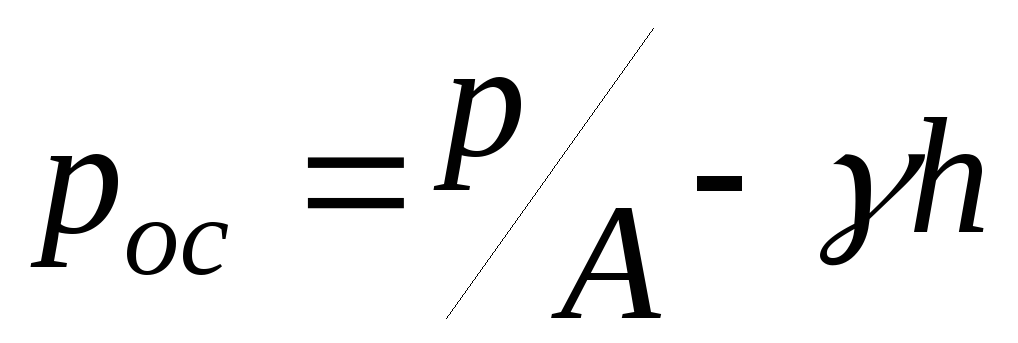 ,
,
Where 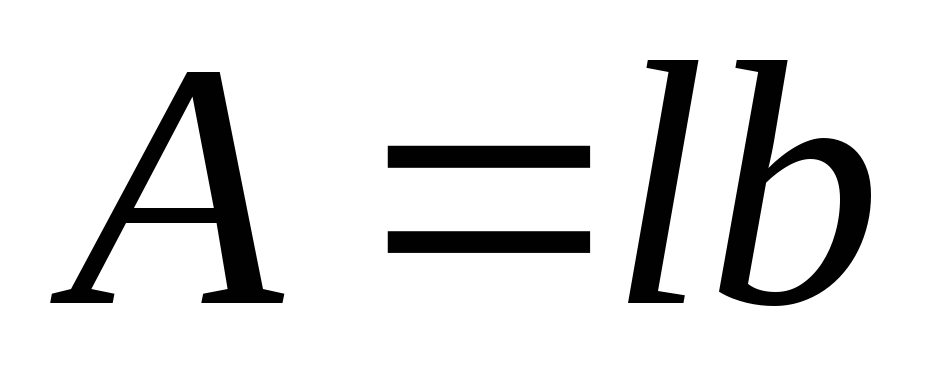 - area of the base of the foundation;
- area of the base of the foundation;  - natural pressure of the soil at the level of the base of the foundation.
- natural pressure of the soil at the level of the base of the foundation.
Due to the gradual change in stresses along the depth of the base, its thickness can be divided into a number of layers so that within each layer the soil is homogeneous; the thickness of each layer should be no more than 0.4 b and tension  calculated from the load at the boundary of the layers according to the formula
calculated from the load at the boundary of the layers according to the formula
 ,
(4.12)
,
(4.12)
V  which
which  determined according to the table. 3.2 and plot these stresses. Then a diagram of the stresses of the natural pressure of the soil is built along the axis of the foundation
determined according to the table. 3.2 and plot these stresses. Then a diagram of the stresses of the natural pressure of the soil is built along the axis of the foundation
 ,
(4.13)
,
(4.13)
Here ![]() And
And  – specific gravity soil and the thickness of each layer.
– specific gravity soil and the thickness of each layer.
Lower limit of the compressible thickness BC defined graphically by superimposing on a diagram  diagrams
diagrams  reduced by five times.
reduced by five times.
The total settlement of the foundation is determined by summing the settlement of individual layers within the compressible thickness:
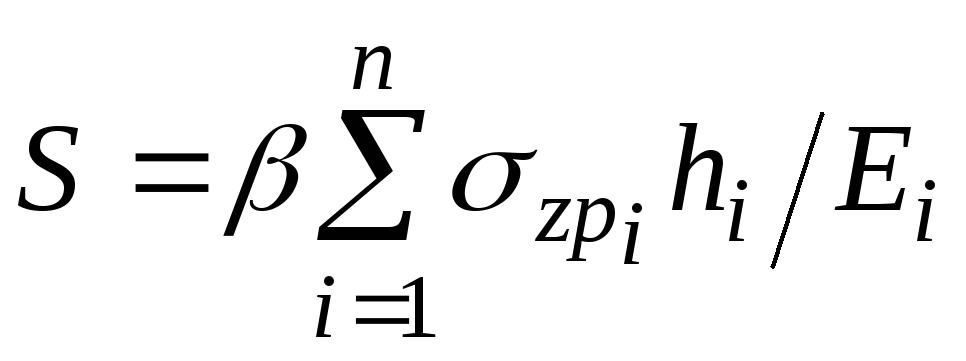 ,
(4.14)
,
(4.14)
Where  =
0,8;n is the number of layers within the compressible thickness;
=
0,8;n is the number of layers within the compressible thickness;  – thickness i-th layer of soil;
– thickness i-th layer of soil;  – modulus of deformation i th layer of soil.
– modulus of deformation i th layer of soil.
4.2.4. Subgrade settlement over time
If water-saturated clay soils lie at the base of the foundation, sedimentation can develop for a long time. The long process of sediment development is associated with a very low water filtration rate in clay soils (filtration coefficient of the order of 10 -7 ... 10 -10 cm/s) and slow compaction of water-saturated soils.
Recall that water-saturated soils include soils with a water saturation coefficient 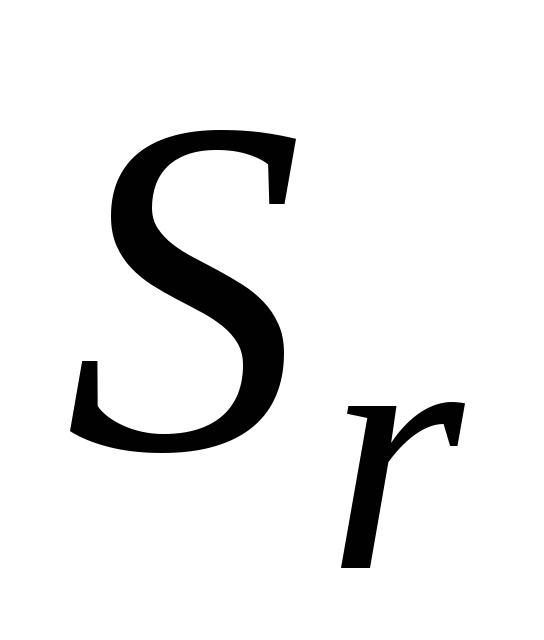 >
0,8.
Modern methods for predicting the development of soil deformations over time are based on the theory of filtration consolidation.
>
0,8.
Modern methods for predicting the development of soil deformations over time are based on the theory of filtration consolidation.
The one-dimensional problem of the theory of soil filtration consolidation, first formulated by prof. K. Terzagi (1924), was further developed in the works of professors N.M. Gersevanov, V.A. Florin, N.A. Tsytovich, Yu.K. Zaretsky and others.
The theory of Terzagi-Gersevanov, developed for the one-dimensional problem of the consolidation of a homogeneous soil layer, is based on the following prerequisites and assumptions:
1) the soil is homogeneous and completely saturated with water;
2) the load is applied instantly and at the first moment of time is completely transferred to the water;
3) the rate of subsidence of the soil base is determined by the rate of squeezing water out of the pores;
4) the movement of water in the pores of the soil occurs in the vertical direction and obeys the Darcy laminar filtration law (2.17).
Let us consider the solution of a one-dimensional problem of the theory of filtration consolidation according to Terzagi-Gersevanov, which is currently the theoretical basis for calculating the settlement of foundations in time. According to the above assumptions, the process of settling in time under the action of a constant continuous uniformly distributed load under conditions of one-sided water filtration is determined by the laws of filtration and compaction (2.9).
At the initial moment of time t 0
, immediately after the application of the load, the external pressure R completely transferred to pore water 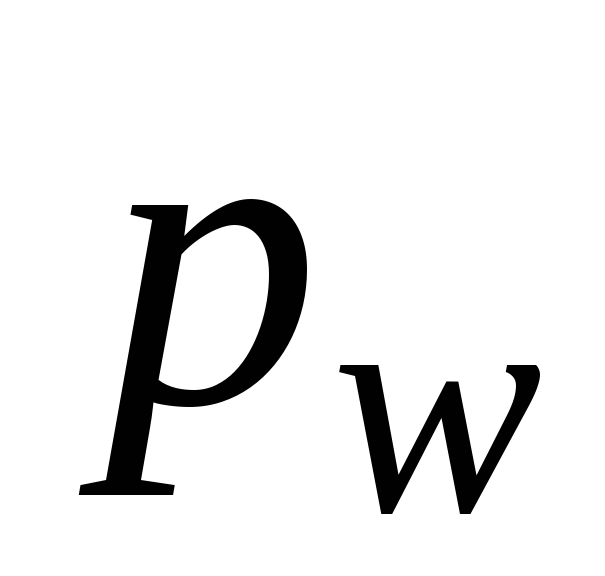 , i.e.
, i.e. 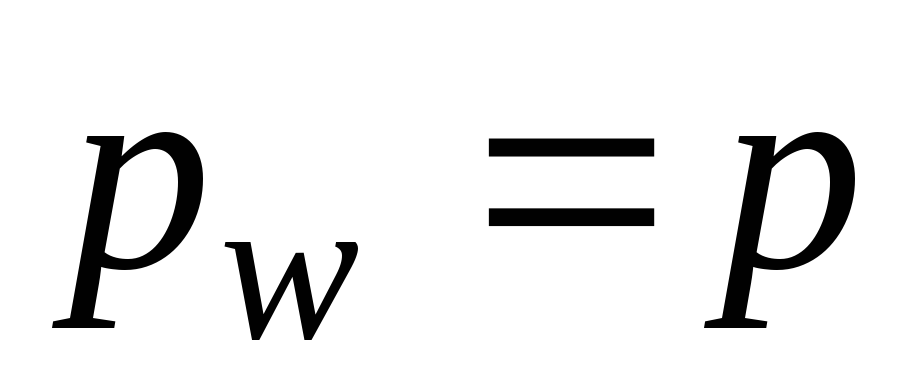 , and the pressure on the mineral part of the soil
, and the pressure on the mineral part of the soil  . However, at the next time t 1 ,t 2 ,…,
t n the pressure in the water will decrease, and the pressure on the mineral particles of the soil will increase, and at any time
. However, at the next time t 1 ,t 2 ,…,
t n the pressure in the water will decrease, and the pressure on the mineral particles of the soil will increase, and at any time
 (4.15)
(4.15)
and at the end of the consolidation, the entire external load will be taken by the mineral particles of the soil ( 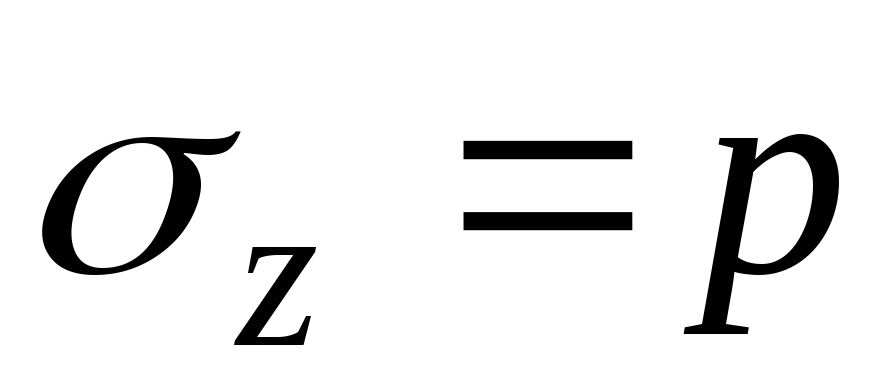 ) (Fig. 4.7).
) (Fig. 4.7).
Soil layer thickness h underlain by an incompressible waterproof base. Load intensity R acts on the soil through the drainage layer. Consequently, as the soil settles, water will be squeezed out of it in one direction (upwards). As water is squeezed out of the pores, the soil will be compacted (porosity will decrease). Water consumption dq, extruded from the elementary layer dz at a depth z(Fig. 4.7), will be equal to the decrease in soil porosity dn for a period of time dt, i.e.
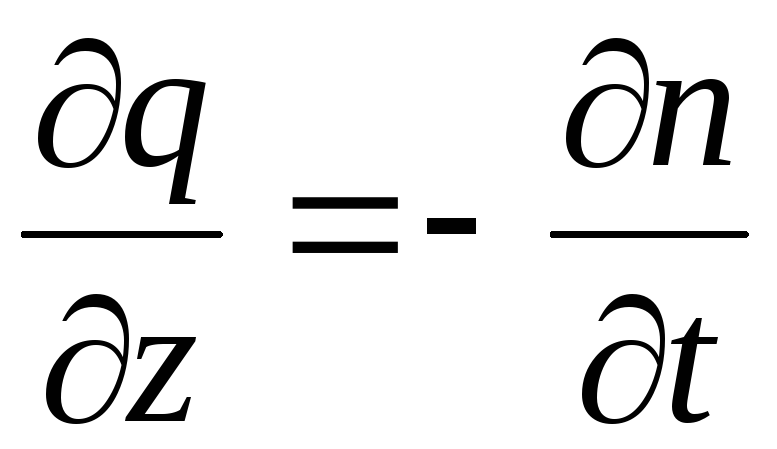 .
(4.16)
.
(4.16)
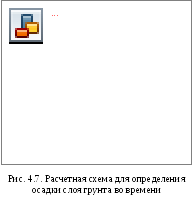
The minus sign indicates that with an increase in water flow, soil compaction occurs and its porosity decreases. After a series of transformations, using the laws of laminar filtration and compression, equation (4.16) can be represented for a one-dimensional problem in the form of a partial differential equation
 ,
(4.17)
,
(4.17)
Where  - consolidation coefficient, the value of which depends on the properties of the soil,
- consolidation coefficient, the value of which depends on the properties of the soil,
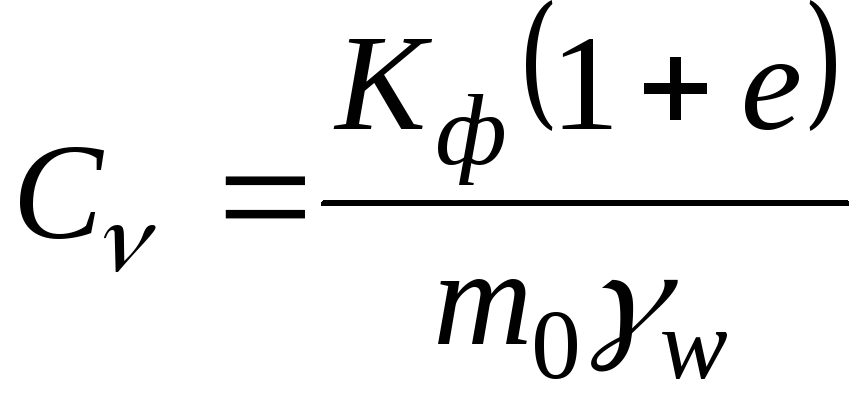 ,
(4.18)
,
(4.18)
Here 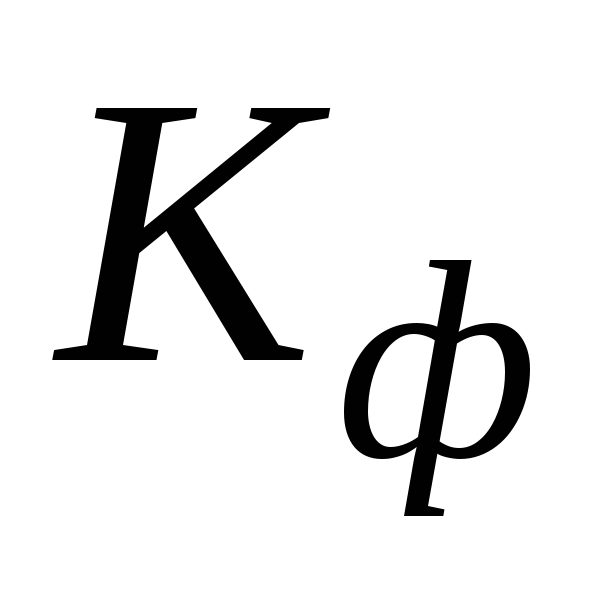 – filtration coefficient;
– filtration coefficient;  – coefficient of soil compressibility; e– porosity coefficient;
– coefficient of soil compressibility; e– porosity coefficient; 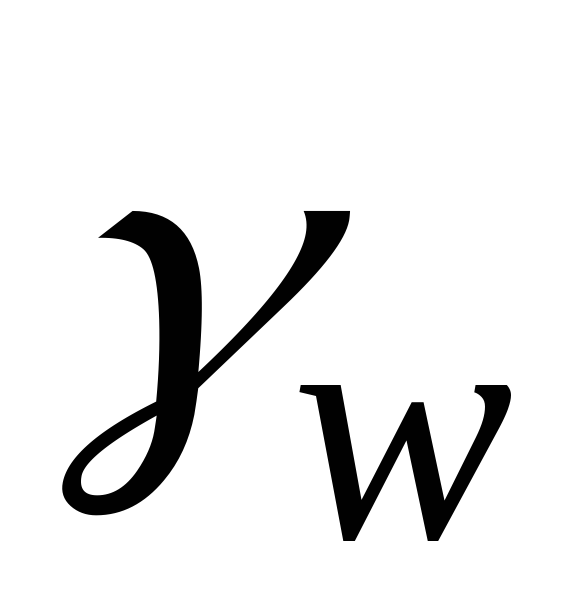 is the specific gravity of water.
is the specific gravity of water.
The solution of equation (4.17) is found by applying Fourier series (i.e. trigonometric series) under the following boundary conditions:
1) t
= 0;
 =
0;
=
0;
2)t = ∞;
 =R;
=R;
Where m is a positive integer of the natural series, m = 1,3,5,…, ∞;
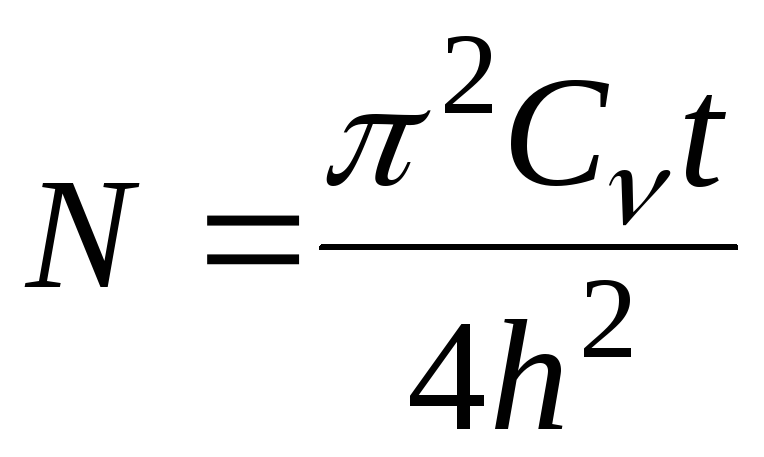 -consolidation indicator, (4.20)
-consolidation indicator, (4.20)
h is the layer thickness; t– time from the moment of loading.
If voltage is known  in layer dz during t from the moment of loading, then the settlement of this layer follows from expression (4.10):
in layer dz during t from the moment of loading, then the settlement of this layer follows from expression (4.10):
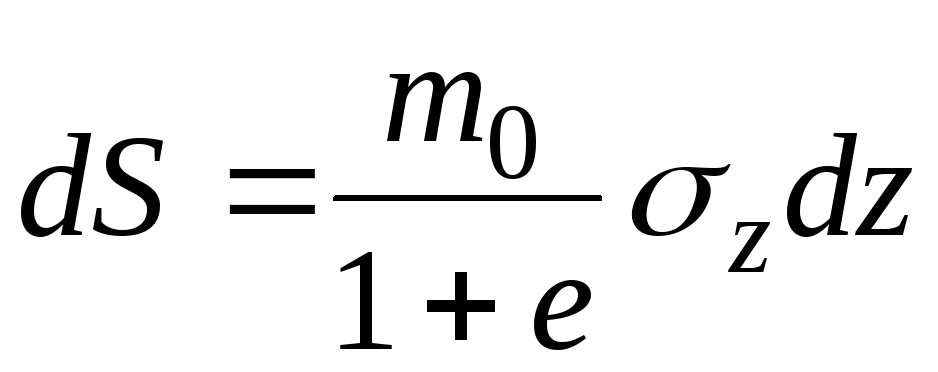 .
.
Draft layer thickness h during t find by integrating the resulting expression from 0 to h:
In this expression, the part in front of the integral is the final draft, and the part 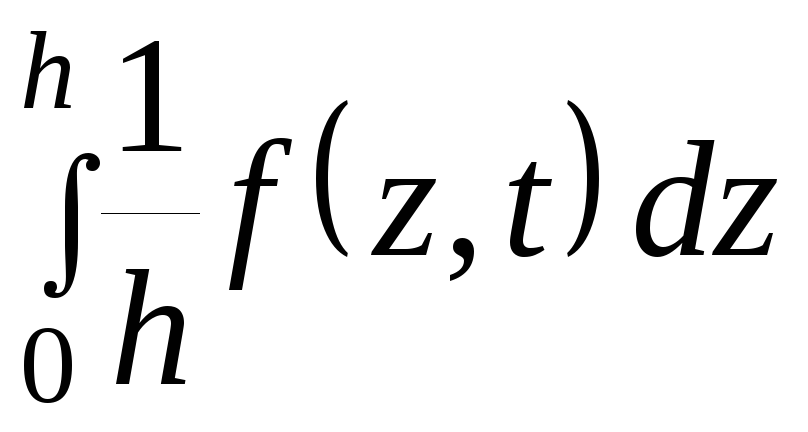 can be defined as degree of sediment consolidation
U, equal to the ratio of sediment unstabilized
can be defined as degree of sediment consolidation
U, equal to the ratio of sediment unstabilized 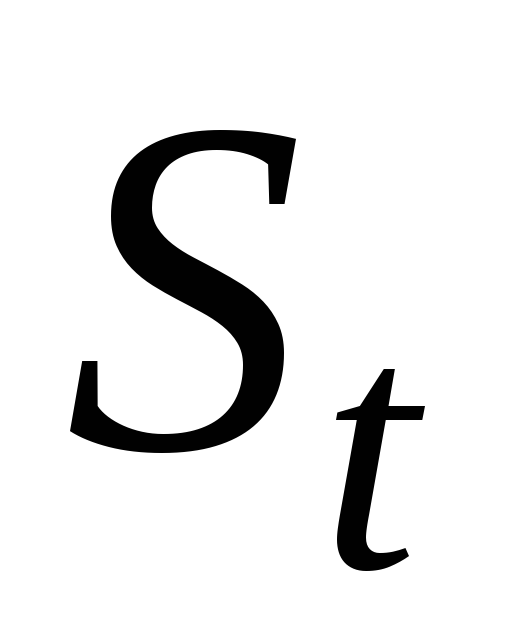 to the final
to the final  , i.e.
, i.e.
 .
(4.21)
.
(4.21)
After integrating (4.21) we get
 .
.
Quantities U And N functionally related. In table. 4.1 given quantities N for various variants of sealing stress diagrams (Fig. 4.8).
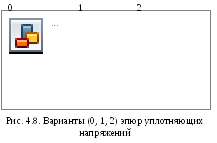
Option 0 corresponds to the compaction of the soil layer under the action of a continuous load. The sealing pressure diagram has the form of a rectangle. Option 1 takes place when the soil is compacted under the pressure of its own weight, option 2 - when the compacting stress decreases with depth according to the triangle law.
Given different values of the degree of consolidation U, according to the table. 4.1 define N and find the time for a given degree of consolidation:
 .
(4.22)
.
(4.22)
Lecture No. 9
CALCULATION OF THE FOUNDATION SETTLEMENT
The purpose of the calculation for the second limit state is to limit the settlement to the maximum allowable values regulated by SNiP.
Types of deformations
1. Draft- this is a deformation that occurs as a result of soil compaction under the action of external loads or the own weight of the soil without a fundamental change in its structure.
2. Drawdown- this is a deformation resulting from soil compaction from the action of external loads and the own weight of the soil (as well as additional loads - soaking, thawing) with a radical change in the structure of the soil.
3. Rise and draft- these are deformations associated with a change in the volume of soils when their moisture content changes or under the influence of additional factors (thawing, swelling, shrinkage, freezing).
4. subsidence is a deformation resulting from the development of minerals, causing a decrease in the level ground water(UGV) and others.
5. Horizontal movement- this is a deformation associated with the action of horizontal loads on the base or with significant vertical movements during subsidence and subsidence of soils.
Precipitation is divided:
- uniform;
- uneven.
The main causes of uneven sediment:
1. Inhomogeneous stress state of soils at the base, i.e. non-centrally loaded foundation or the use of various types of foundations under the structure.
2. Uneven compressibility of soils in the base under the foundation.
Settlement calculation methods
1. Method of layer-by-layer summation.
2. Equivalent layer method (Tsytovich method).
3. Method of a linearly deformed layer of finite thickness (Egorov's method).
1. Layered summation method
Assumptions taken in the calculation:
1. The soil at the base is a continuous isotropic deformable body.
2. Settlement is due to the action of only vertical load, stress σ zp.
3. Lateral expansion of soil at the base is not possible.
4. Deformation is considered only within the compressible thickness H c, below it is assumed that there is no deformation.
5. The value of the coefficient β=0.8, regardless of the nature of the soil.
Method of calculation
1. We break the base into layers with a thickness h i ≤ 0,4 b.
2. Determine the vertical stresses from the weight of the soil in each layer:
σ zq = γ´ d + Σγ ih i,
Where γ´ - specific gravity of the soil above the base of the foundation;
d- the depth of the foundation;
γ i– specific gravity i-th layer of soil;
σ zq – the diagram is straight.
3. We determine the vertical stresses from the actual load on the soil and build a diagram:
σ zp= αР 0 = α(Р ср –γd),
Where α - dimensionless coefficient, determined according to the application of SNiP.
4. The lower limit is reached when σ zp= 0.2σzq in soils with a modulus of deformation E≥ 5 MPa; σ zp= 0.1σzq for soils with E < 5 МПа.
5. Determine the settlement of the foundation by the formula:
 , where is the average value of vertical stresses in i-
m layer of soil from the load on the foundation.
, where is the average value of vertical stresses in i-
m layer of soil from the load on the foundation.
Disadvantages of the method: 1) bulkiness; 2) low accuracy of calculation, many assumptions.
Advantages of the method: the universality of the assessment of foundation soils.
2. Equivalent layer method
(Tsytovich method)
![]() This method is used for preliminary calculations of foundation settlements with an area of up to 30 m 2 for homogeneous or layered foundations, in which the compressibility of individual soil layers differs little from each other.
This method is used for preliminary calculations of foundation settlements with an area of up to 30 m 2 for homogeneous or layered foundations, in which the compressibility of individual soil layers differs little from each other.
The essence of the method is as follows.:
The soil base for the entire depth of compression is assumed to be homogeneous, with uniformly loaded layers, i.e. replacement with an equivalent layer of soil is possible.
Equivalent layer is a layer of soil, the sediment of which ( S 2 ) under a continuous load is equal to the settlement of the foundation ( S 1 ) under the same load and the same conditions.
1. The soil is homogeneous within the compressible thickness;
2. The soil is a linearly deformable body (i.e., the deformation is proportional to the stress).
Method of calculation
For a uniform base
S = huhm υ P 0 , Where huh is the thickness of the equivalent layer;
m υ– coefficient of relative soil compressibility: ;
P 0- additional vertical pressure in excess of the calculated one (from the appendix SNiP).
huh = A ωb,
Where ω - settlement coefficient, depending on the shape of the loading area, on the rigidity of the foundation and the location of the point at which the settlement is determined.
A is the coefficient defined as  , where ν – Poisson's ratio (coefficient of lateral expansion);
, where ν – Poisson's ratio (coefficient of lateral expansion);
A ω- coefficient of the equivalent layer, determined from the table. Tsytovich.
For layered base
Draft is determined by the formula:
![]() , where is the weighted average compressibility factor:
, where is the weighted average compressibility factor:
 , Where h i– thickness i-th layer of soil;
, Where h i– thickness i-th layer of soil;
m υi– coefficient of relative compressibility i-th layer of soil;
z i is the distance from the lower boundary of the compressible thickness to the middle i th layer.
Compressible thickness or core is the thickness of the soil below which the deformation is not taken into account ( H with ~hA) .
3. Method of linearly deformed layer
(Egorov's method)
The method is used in the following cases:
1) If within the compressible thickness lies a layer of soil with a modulus of deformation E≥ 100 MPa and thick h 1 subject to the condition:
![]() , Where E 1≥ 100 MPa;
, Where E 1≥ 100 MPa;
E 2 is the deformation modulus of the underlying soil layer (below the interlayer h 1 ).
In this case, the thickness of the linearly deformed layer H limited to the roof of the soil with the module E 1.
2) If the width or diameter of the foundation is greater than 10 m and the deformation modulus E> 10 MPa.
H = (H 0 + ψb) kR,
Where H is the thickness or thickness of the linearly deformed layer;
H 0 And ψ are taken equal:
For foundations composed of silty clay soils
H 0= 9 m; ψ = 0.15 m;
For sandy foundations
H 0= 6 m; ψ = 0.1 m;
kR\u003d 0.8 at P cf \u003d 100 kPa;
kR\u003d 1.2 at P cf \u003d 500 kPa.
Interpolation is used to find intermediate values.
 |
Method of calculation
Draft is determined by the formula:
 ,
,
R - average pressure under the base of the foundation;
k S And k m- are determined according to the table. 2 and 3 app. 2 SNiP;
k i And k i -1 - coefficients determined from Table. 4 app. 2 SNiP, depending on the shape of the foundation and aspect ratio;
Ei– modulus of deformation i-th layer of soil;
n is the number of layers differing in compressibility within the calculated value of the compressible layer.
Assumptions taken in the calculation:
1. The capacity of the bearing layer of soil is limited.
2. Deformation is directly proportional to stresses.
3. The influence of all stress components is taken into account.
4. The rigidity of the foundation is not taken into account.
Advantages of the method: the most accurate method.
Under the influence of the load from the structure, its base is deformed and gives a draft, and in some cases - a subsidence.
Foundation settlement (or foundation settlement) is the vertical movement of the soil surface under the base of the foundation, associated with the transfer of the load from the structure to the base.
Distinguish between the draft of the base uniform and uneven. With uniform settlement, the displacements of points on the soil surface under the entire area of the foundation are the same, and with uneven settlement, they are not the same. Uniform subsidence of the base, as a rule, is not dangerous; uneven settlement often causes violations of the conditions for the normal operation of structures, and sometimes their accidents.
For soil compaction under load, a certain time is required, during which an increase in the subsidence of the base is observed. The draft corresponding to the final compaction of the soil is called full, final or stabilized.
A large rapid flowing sediment, accompanied by a radical change in the composition of the soil, is called subsidence. Settling is observed, for example, when soil bulges out from under the base of the foundation and when macroporous soils are soaked under load.
§ 22. Methods for calculating draft
The calculation of compaction settlement is carried out on the assumption that the soil obeys the laws of a linearly deformable medium, when the deformations are linearly dependent on pressures. Theoretically, the maximum pressure on the soil, at which a linear dependence exists, is determined by the absence of plastic zones under the base of the foundation. However, observations of structures show that a small development of plastic deformation zones under the faces of the foundation can be allowed.
To determine the final settlement of the base, the method of layer-by-layer summation is widely used. At the same time, it is believed that the subsidence of the base occurs as a result of compaction of a certain thickness of soil of limited thickness, called the active zone. The lower boundary of the core is taken at that depth da from the base of the foundation, at which the additional pressure (under the center of gravity of the base) from the load transferred by the foundation is 20% of the domestic (natural) pressure.
With a foundation located on the soil surface, additional pressures pz, kPa, are determined by formula (2.7), and with a foundation buried in the ground, by the formula
Рz=а(р0-рg), (4.1)
where a is the coefficient taken according to Table. 2.1; p0 - normal stresses along the base of the foundation, kPa; pg - domestic pressure at the depth of the foundation footing, kPa.
The installation of supports in the riverbed causes constriction of the channel and can lead to intense erosion of the soil, especially near the supports. As a result, the domestic pressure in the soil decreases. In formula (4.1), the domestic pressure is substituted, calculated without taking into account soil erosion, i.e., the pressure with which the soil was compressed before the construction of the structure. This is due to the fact that after unloading the soil, its deformations during repeated loading are initially very small; they begin to noticeably increase only when the stresses in the soil reach the values that existed before unloading.
The active zone of the soil is divided into horizontal layers with a thickness of not more than 0.4b, where b is the smallest size of the foundation in the plan, m. If there is an overlay of different soils within the active zone, then their boundaries are taken as the boundaries of the selected layers. The draft s of the base is determined by summing the deformations of the individual layers. The deformation si m of each i-th layer is calculated on the assumption that soil compaction occurs in the absence of lateral expansion (under compression compression conditions) at a constant pressure pz kPa; the latter is taken equal to the average additional pressure pr, kPa, from the pressures arising at points under the center of gravity of the base of the foundation within the considered layer.
Using formula (1.29) to determine the soil deformation under compressive compression, we can write:
si=eiti=(piβi/Ei)li (4.2)
where ei is the relative deformation of the soil of the i-th layer; ti - thickness of the i-th layer of soil, m; βi - coefficient taken according to Table. 1.3
depending on the type of soil of the i-th layer; Ei - soil deformation modulus of the ith layer, kPa, determined by formula (1.28) based on the results of tests of soil samples for compressive compression.
Residents of private houses may have one very unpleasant problem: defects in the form of cracks may appear in the foundation for a long time, due to which it begins to shift. This shift or displacement is called "foundation settlement". This is due to the compression of the soil cover. Causes of foundation settlement, methods for diagnosing settlement, calculation of settlement different types foundation, the solution to this problem - all this will be discussed in this article. It is important to remember that when cracks appear in the base, there is no need to be afraid, just continue to monitor this until the foundation settlement has reached a critical state.
Causes of foundation settlement
The composition of the soil is one of the most important reasons for the settlement of the base of the house. The soil is divided into types and each has its own strength. The most durable types of soil cover are rocky soil and dispersed soil. In another way, these soils are called incoherent, since they do not retain moisture.
![]()
The first type of soil is based on monoliths, and the second type consists of mineral grains. different size. But there are connected types of soil, they absorb and retain moisture, therefore the main component of these types of soil cover is clay, which is why the soil layer acquires the property of mobility and deformation. During the cold season, the moisture contained in these types of soil freezes and the soil layer expands. The first reason is the cohesive soil layer of the soil. The second reason is the design features of the base of the house. The third reason is the incorrectly distributed wall pressure on the foundation. When building a house, all these factors should be taken into account so that in the future you will not encounter this problem.
Methods for diagnosing foundation settlement
In order to identify or eliminate defects that have arisen in the foundation of the house, it is necessary to determine the process of displacement of the foundation and observe the settlement. There are many diagnostic methods (foundation settlements). Which method to use depends on the structure of the house and its components.
Description of the pile foundation
Pile foundations are built on subsiding soil layers, because they have a very small bearing capacity(factors that affect this soil parameter will be discussed later). Piles are used in order to transfer all the pressure of the building to the soil, thereby eliminating a large load on the base of the room. It happens that the piles do not reach the soil layer; for this, hanging piles are used. They are the connection between the soil and ordinary piles.

The pile foundation may consist of different material. They can be made of wood, reinforced concrete, steel. Piling methods are different. Piles are hammered, stuffed and screwed. Today, piles made of reinforced concrete are most often used. Their length starts at 4 meters and ends at 12 meters. Such piles, which are made of reinforced concrete, can be found in the industrial sector. There are several types of piles:
- Metal piles. They burrow into the soil where there is moisture.
- Piles with casing pipes. Their length ranges from 7 to 12 meters. Casing pipes will help to avoid a breakthrough of the soil.
- Piles that are used when the well has already been drilled. After their installation, they are poured with concrete, forming a solid foundation for the building.
Piles are used in places where the soil layer is very weak. They are also applicable for construction multi-storey buildings. But the main disadvantage of this material is that it has shrinkage, which can lead to sedimentation of the base of the room.
Pile foundation settlement
Cause of precipitation pile foundation- this is the load on the very foundation of the house. If the displacement continues, it can lead to the complete destruction of the structure. To avoid this, the settlement of the pile foundation is calculated. The resulting value is compared with the value of the draft, which is allowed. If it exceeds it, then the foundation must be corrected. To make a correction of the pile foundation, it is necessary to increase the length of the pile installations. The ends of the piles must be supported by stronger layers of soil. Piles distribute pressure throughout the ground. Pressure is influenced by several factors: soil properties, pile length, and space between piles.
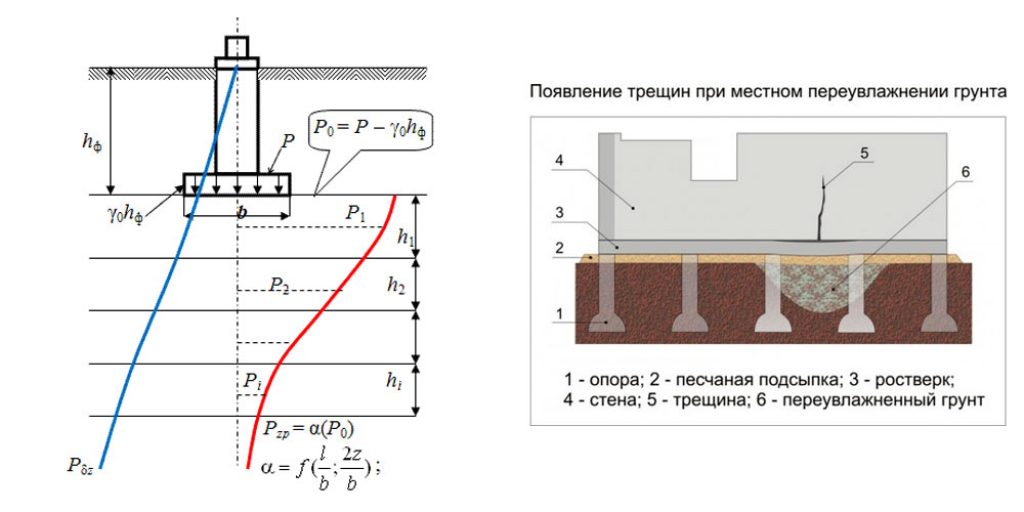
One of the methods for calculating the settlement of a pile foundation is called "layer summation". There is a formula: Si = h * m * P. This formula shows that the settlement of the foundation is equal to the sum of the compression of the soil layers. A scheme is being made for calculating the settlement of a pile foundation. It shows the load and pressure of the walls. The pile foundation of the house is divided into two types: single-layer and two-layer. Both types require soil with medium strength. To calculate the settlement of the pile foundation of the house, it is necessary to determine the characteristics of the soil, this includes the compressibility coefficient and deformation (modulus). Calculation of settlement can be carried out for one pile, several or the entire foundation of the building. But you can make the pile foundation correct. To do this, you need to know the weight and length of the structure, as well as the weight of the entire soil.
The next method is the calculation of the settlement of the foundation using the equivalent layer method. It is used if it is not possible to carry out lateral expansion. The thickness of the soil layer is called the equivalent layer. According to this method, first you need to determine the thickness of the equivalent layer, there is a formula for finding it: hе =A· ω· b. A is a coefficient, and it depends on the type of soil layer, ω is also a coefficient, the value of which depends on the base of the house, its shape and rigidity, b is the value of the width of the base of the building. The product of the first factors (A and ω) is the coefficient of the equivalent layer. Having found the thickness of the equivalent layer, one can also find the value of the precipitation itself: S = Po · hе · mv. The main advantage of the method of calculating the settlement of the equivalent layer is that it is possible to determine the coefficient of the equivalent layer for each type of soil, in contrast to the layer-by-layer summation method.

Description of the tape monolithic foundation
A strip foundation is a foundation under the walls of a building, the pressure of which is distributed throughout the foundation. The strip foundation is poured in those places where the structure goes along with the load-bearing walls. The strip foundation is a solid and solid foundation. This type of foundation has two types of foundation: one is prefabricated, the other is piled. At the prefabricated foundation, all the pressure goes to the soil layer. In the second type, tape grillages made of reinforced concrete give a load to the piles. The two most common materials from which the strip foundation is made are reinforced concrete and concrete. Monolithic strip foundations are used most often when it is required to expand the foundation pad. Expansion is necessary when the topsoil layer has a low bearing capacity, as well as when there is groundwater.
It is very simple to reduce the pressure on a tape monolithic foundation. Excessive load on the foundation of the house, in the future, can lead to its settlement. To avoid this, it is enough to make the height of the foundation one and a half more than the width. After this procedure, the load of the rest of the structure and objects inside the house will be significantly reduced.
For a stronger foundation, it is necessary that the walls of the foundation be much wider than the walls of the building structure, by about 15 centimeters.
How to avoid sedimentation of the tape monolithic base of the room
The causes of sedimentation of the strip foundation can be different:
- The bearing capacity of the soil layer was incorrectly set, which causes unacceptable pressure.
- The foundation lies on unsuitable ground.
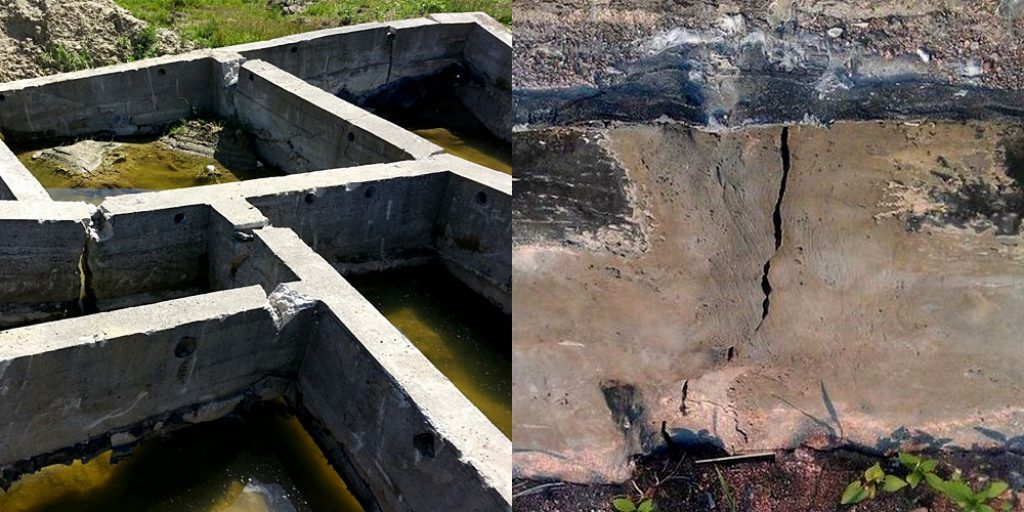
The entire calculation of the construction of the tape base of the house can be divided into three stages:
- First, it is necessary to determine the type of soil on which the foundation of the house will be built. There are many methods for determining the type of soil. The easiest of them - throughout the territory where the foundation will be built, you need to make a certain number of holes, after which you can see a cut of the soil. Although one site may have several types of soil cover. After determining all types of soil, you will be able to build a foundation with the desired depth. The usual type of soil has a bearing capacity of 2-2.1 kg / cm2. This value should be taken into account during construction. If, according to your calculations, the weight of the building exceeds this norm, it is simply necessary to increase the tape. This is done because this value includes the calculation of the settlement of the tape base of the house in the following years.
- Secondly, it is necessary to determine the mass of the entire building. The mass includes not only walls, but also various objects that are inside the living space. And you should also take into account the weight of the snow that will be on the roof, because the mass of snow can reach more than one ton. Therefore, you need to check the strip foundation of the house according to three characteristics. It is necessary to check the bearing capacity of a certain type of soil cover. Thanks to this check, it will be clear what size the base of the room should be. To determine the bearing capacity of the soil, one should take into account various factors that can affect the soil: moisture, density, the possible presence of groundwater in the soil (usually they are at a depth of 30 meters).
- Thirdly, the size of the base of the building should be adjusted. This is done in order to pour the right amount of concrete. The volume of concrete is equal to the cubic capacity of the base of the room.
Compliance with all these conditions will help you avoid settlement of the strip foundation for several decades.
Summarize. Foundation settlement is best avoided than dealt with in the future. It is important to follow a few rules when building the foundation of a house. With allowable settlement, two methods should be used to calculate it: layer-by-layer summation and the equivalent layer method. The formulas of these methods will help you get rid of the settlement of the foundation.



